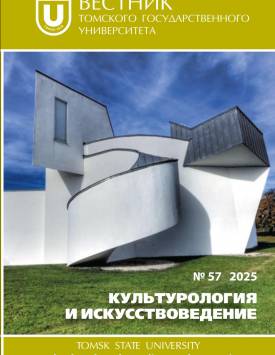Urban identity. Part 2. Virtual projection of images about significant “others”
In the second article on urban identity, an attempt is made to reach citizens selfimage through a linguacultural analysis of speech production created by users of the popular social network. The work is based on the position that one of the mandatory factors of group consolidation and development of self-consciousness is the recognition of significant “others” and the establishment of differentiating features with them. Knowing that the development of citizens self-consciousness is influenced by external and internal factors, it is necessary to consider two components in the structure of selfconsciousness - “spontaneous” and “constructed”. The framework of this study is set in such a way that it discusses exactly the meanings that are broadcast among local residents to maintain and reproduce common ideas. The research material is presented by correspondence in the local Internet-communities of Solikamsk (Overheard Solikamsk!) and Kungur (Overheard Kungur). The object of the study was the official astionyms of the Perm Region, found in the texts of the correspondence of community users. The analysis included procedures for the quantitative calculation of onyms and thematic classification of the contexts of their use. A quantitative study showed that astyonyms and their derivatives in Internet correspondence occur with different frequencies. Members of the Solikamsk community often inform each other about Perm and Berezniki, while members of the Kungur community mostly inform each other about Perm. The thematic analysis of the contexts with the astyonyms Perm and Berezniki led to two main conclusions. First, the position of the significant “other” in the urban community is determined by functional significance. User correspondence reveals that the demand for the services of another city is primarily determined by medical needs and the need to purchase manufactured goods: construction, household, electronics, etc. Accordingly, the frequency of astyonyms and their derivatives correlates with the extent to which a particular city is able to satisfy the indicated needs of local residents. Secondly, the category “we - they” in relations between cities is revealed in different ways, depending on the specifics of the functional significance of these loci. The relations of Solikamsk and Kungur with Perm satisfy the “city with limited opportunities - a city with great opportunities” scheme, and the relations between Solikamsk and Berezniki satisfy the “city - neighboring city” scheme. The author declares no conflicts of interests.
Keywords
cultural anthropology, urban self-image, spontaneous identity, significant “other”, online communityAuthors
| Name | Organization | |
| Panteleeva Liliya M. | National Research University Higher School of Economics | liliya_pant@mail.ru |
References

Urban identity. Part 2. Virtual projection of images about significant “others” | Tomsk State University Journal of Cultural Studies and Art History. 2025. № 57. DOI: 10.17223/22220836/57/8
